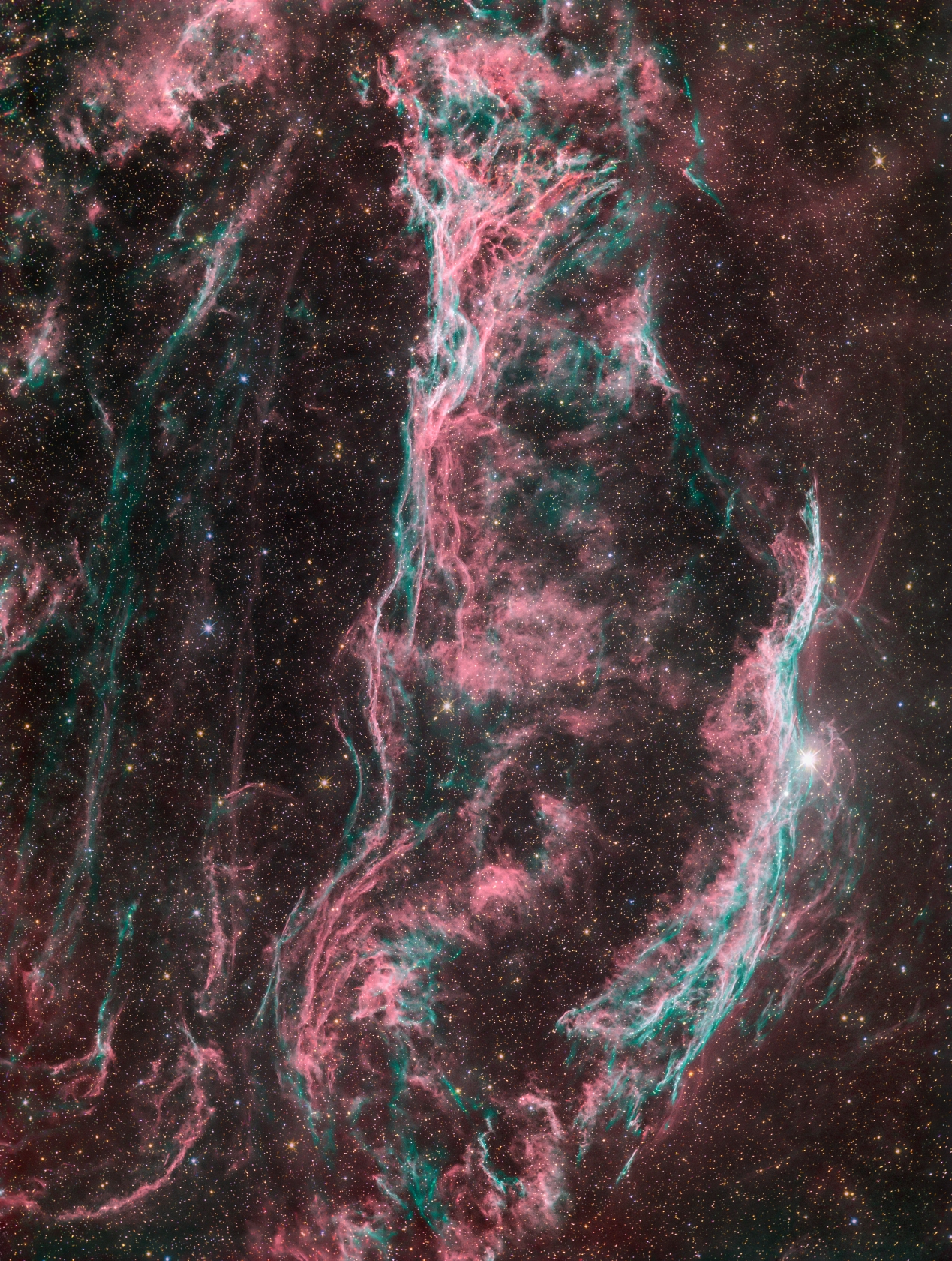
Approximately 10,000 to 20,000 years ago, a star 20 times more massive than the Sun exploded in a supernova in the constellation Cygnus. The remnants of this explosion now form the Veil Nebula, consisting of heated and ionized gas as well as dust. The Veil Nebula constitutes the visible portions of a larger structure known as the Cygnus Loop. Various arcs within the nebula have acquired their own names and catalogue identifiers. Notable components include:
The nebulosity emits all of its light in isolated emission lines. The most prominent of those are the Hα, [OIII] and [SII] lines, which I recorded with narrowband filters to create the color image. This is a "natural color" composition mixed so that the resulting colors are close to the visible spectrum of the human eye. The following mixture was used:
 Veil Nebula and Surrounding Area, telelens photograph.
Veil Nebula and Surrounding Area, telelens photograph.
 NGC 6960/74/79 - Western Veil and Pickering's Triangle in Hα, which is part of this image.
NGC 6960/74/79 - Western Veil and Pickering's Triangle in Hα, which is part of this image.
 NGC 6960/74/79 - Western Veil and Pickering's Triangle in [OIII], which is part of this image.
NGC 6960/74/79 - Western Veil and Pickering's Triangle in [OIII], which is part of this image.
 NGC 6960/74/79 - Western Veil and Pickering's Triangle in [SII], which is part of this image.
NGC 6960/74/79 - Western Veil and Pickering's Triangle in [SII], which is part of this image.
 Pickering's Triangle, Newtonian narrow-band natural-color CCD image.
Pickering's Triangle, Newtonian narrow-band natural-color CCD image.
Exposure Data